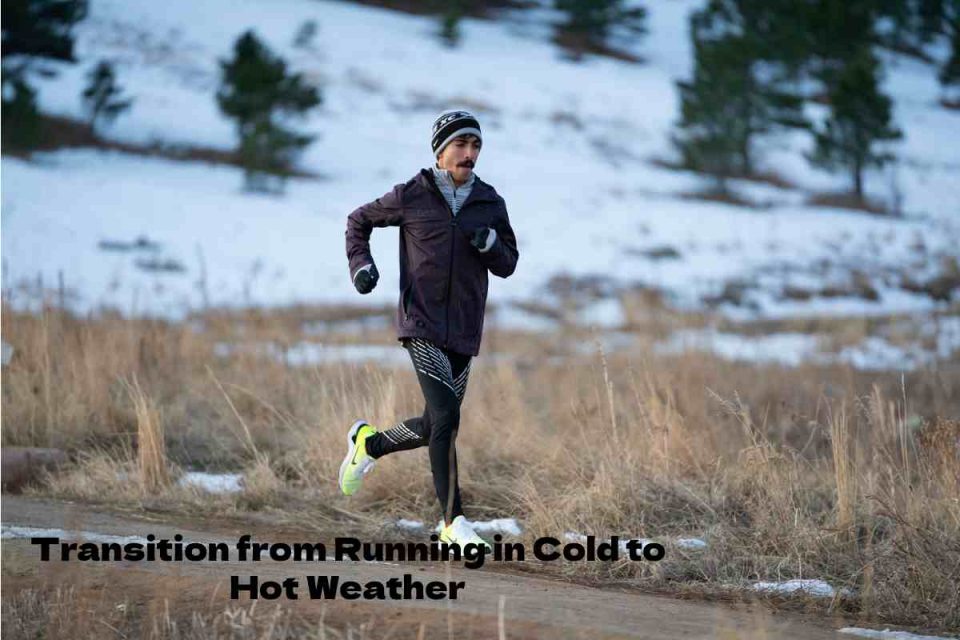Transition from Running in Cold to Hot Weather: As we head from winter into spring, we’re transitioning into warmer weather. With this warmer weather come blooming flowers, buzzing insects, hummingbirds and much more. Most of all, the warmer weather might take you by surprise, especially from morning to midday.

How do you prepare for such weather? How do you get your body ready to go through such transitions?
You prepare by miming the transition: by taking your time. Take the time to prepare for the seasonal change. Rushing into it is only asking to be overwhelmed, and the last thing you want is to feel as if you’ve gone too far during your run.
Remaining prepared can involve many different things, from slowing your mileage pace to remembering to wear medical alert jewelry. Here’s how you can properly make the transition from running in cold to hot weather.
Table of Contents
Make sure you drink enough water.
You need to make sure you’re properly hydrating. While it’s important to drink water all through the winter, the chances of you sweating a lot is lower than it is in hotter weather — unless you’re overdressed.
You should make sure you’re hydrating throughout the day, but you also need to think of how you’re drinking water around, during and after your run. The hydration rule of thumb is to space out your drinking in the following ways:
- Drink at least 16 ounces of water a few hours before your run.
- Drink 6 to 8 ounces of water a half hour to 15 minutes before your run.
- Drink water steadily throughout your run — about two to three ounces every 20 minutes (about a cup an hour).
- Once finished, begin hydrating — take your time so as not to cause bloating or cramps.
Hydration is always important for runners, but it’s especially important as it gets warmer out. Don’t skimp on water. And if you know you didn’t have enough water on a given day, consider easing up on your run. Your priority should always be to protect yourself.
Dress the part.
You also need to make sure you’re not overdressed for the weather. Similar to properly hydrating, you want to make sure you’re dressed comfortably. That involves not wearing too much.
By overdressing, you run the risk of raising your body temperature to a dangerous level, which can lead to excessive sweating, heat exhaustion and (eventually) heat stroke.
A good rule for runners is to never dress like it’s 10 degrees warmer out than it is. Why 10 degrees? Our bodies warm up when we begin to run. If we dress to the exact temperature outside, we run the risk of overdressing, which could lead to excessive sweating and worse.
By dressing as if it’s 10 degrees warmer outside, you provide yourself with room to comfortably warm up. This way, you’ll be perfectly dressed for once you’re up and running.
Limit your mileage and pace.
A common mistake runners make is that they try to do too much at once. The same goes for many first-time weightlifters: They do every exercise, to the max, all in one day, and then end up getting burnt out after just a few days — if not out rightly injured.
Here’s something to always remember: Don’t increase more than one stressor at a time.
In the case of changing weather, you’ll want to reduce other stressors while the temperature begins to rise. And if you’re worried about reducing, keep them steady while the weather changes around you.
So while the weather changes, consider reducing your weekly mileage and decreasing your mileage pace. The rest of your body will thank you as it acclimates to the warmer temperatures.
Follow your instincts.
You need to listen to your body. Always.
Don’t let that little insect in your brain tell you “You need to run harder,” “You need to push it, more and more” when your body is screaming for you to calm down. Chances are you’re hearing these pains because you’re running too hard for your conditions — weather, physical conditioning — and you’re beginning to experience muscle strain, dehydration or heat exhaustion.
Once you begin hearing the alarm bells ring, it’s time to slow down and listen to what your body is yelling. Sit down, take a rest and catch your breath. It’s better to be safe than sorry.
Similarly, be mindful of when it’s time to slow down. If you’re finding yourself getting dizzy or breathing heavily, or you notice your mouth is getting dry, it’s time to immediately slow down and come to a stop. If you can, find a nearby place where you can get clean drinking water so you can properly hydrate while you rest.
Wear a medical alert bracelet.
One of the best ways you can protect yourself as a runner is to carry your personal information with you wherever you’re running. In particular, you should have your relevant medical information on you, such that a stranger can identify you and your medical ailments in the event of a medical emergency.
Runners who rely on an Apple Watch to track their runs can easily wear identifying information, thanks to an Apple Watch medical ID.
Don’t wander off too far from home.
If you’re on vacation and going for your regular runs, try to stay within a few miles of your home base or hotel. Run loops if necessary. Staying near your home base allows you to stop or get help fairly quickly if you’re having difficulties or you become dehydrated. If you’re in a race, there should be people on the course able to help if you run into trouble.
Try some other remedies.
- Stick to a route you know well.
- Work out at a gym or at home on a treadmill in warmer weather.
- Sit in a sauna for five minutes every other day, gradually increasing the time.

